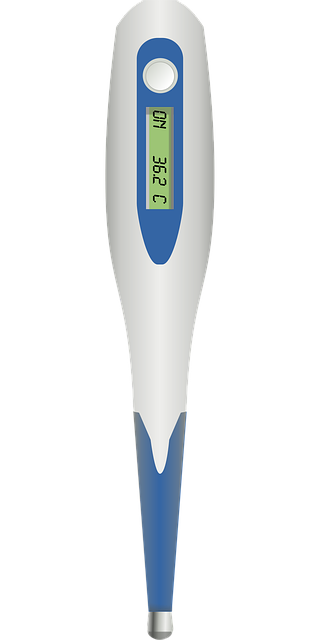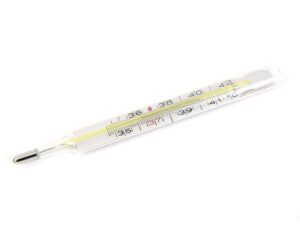Translation services for UK Clinical Protocols must meet stringent regulatory standards, ensuring patient safety and data integrity. Key requirements include linguistic accuracy, knowledge of local governance (e.g., MHRA, GDPR), cultural nuances, and seamless integration into healthcare workflows. Best practices involve professional medical translators, standardized terminologies, CAT tools, QA checks, and regular updates, resulting in accurate, consistent protocols that enhance patient care and maintain UK's commitment to global healthcare standards.
Ensuring UK compliance with translated clinical protocols is paramount in our increasingly globalized healthcare landscape. As medical research and treatment methods advance, the seamless integration of international best practices becomes essential. However, translating complex clinical protocols into accessible, culturally sensitive resources presents a significant challenge. The potential for misinterpretation or misapplication of guidelines can have grave consequences. This article explores the critical need for robust translation services tailored to UK clinical protocols, delving into the complexities and offering practical solutions to ensure accuracy, consistency, and adherence to local regulations.
- Understanding UK Regulatory Requirements for Clinical Protocols
- Best Practices for Accurate Medical Translation Services
- Integrating Translated Protocols into Healthcare Workflows Seamlessly
- Quality Assurance and Continuous Improvement in Clinical Protocol Translations
Understanding UK Regulatory Requirements for Clinical Protocols

The UK’s healthcare sector is highly regulated, demanding rigorous adherence to specific standards when introducing new clinical protocols. This ensures patient safety and data integrity but also presents a significant challenge for medical professionals tasked with navigating complex regulatory requirements. When translating clinical protocols into different languages, understanding these regulations is critical to maintain compliance and avoid potential legal pitfalls. Translation services for UK clinical protocols must not only focus on linguistic accuracy but also possess a deep knowledge of local healthcare governance.
Localizing clinical documentation requires an in-depth grasp of the UK’s regulatory landscape, including the role of bodies like the Medicines and Healthcare products Regulatory Agency (MHRA). The MHRA oversees the safety and quality of medicines, medical devices, and clinical trials, ensuring all introductions align with existing laws and guidelines. Translation specialists should also be aware of the General Data Protection Regulation (GDPR), which sets out rules for handling personal data, especially sensitive healthcare information. Adherence to these regulations is not just a legal necessity but a cornerstone of effective communication in patient-centric care.
Practical implementation involves integrating translation services into clinical protocol development from the outset. This collaborative approach ensures that cultural nuances and regulatory expectations are considered simultaneously. For instance, when translating informed consent forms, it’s crucial to convey complex medical information clearly while respecting local ethical standards. Expert translators can help adapt content for UK audiences, ensuring compliance with specific terminology and legal requirements. Regular reviews of translated documents by in-country subject matter experts further solidify accuracy and feasibility.
Best Practices for Accurate Medical Translation Services

Ensuring UK compliance with translated clinical protocols requires a meticulous approach, especially when dealing with medical documentation. Translation services for UK clinical protocols must adhere to stringent standards to maintain accuracy, clarity, and consistency across all languages. Best practices involve leveraging professional medical translators who possess not only linguistic proficiency but also deep domain expertise in healthcare. This ensures that technical terminology is translated correctly and contextually appropriate.
One critical aspect is standardization of translation methodologies. Employing standardized terminologies and glossaries guarantees coherence in multi-language documentation. For instance, the ICH E6 R2 guideline provides a framework for translation of clinical trials documents, emphasizing the importance of accurate and consistent terminology. Additionally, using computer-assisted translation (CAT) tools can enhance efficiency without compromising quality, as these platforms enable translators to maintain consistency and access previous translations for reference.
Regular quality assurance (QA) checks are indispensable. This includes peer review by subject matter experts and back-translation by native speakers in the target language. Data from studies comparing machine translation output with human translation has shown that while CAT tools can significantly speed up the process, they often introduce errors that require manual correction. For instance, a study published in Clinical Translation found that human translators outperformed machine translation by 23% in terms of accuracy for clinical documents. Therefore, integrating QA into the workflow ensures that translated protocols meet the highest standards of quality and accuracy.
Integrating Translated Protocols into Healthcare Workflows Seamlessly

Ensuring UK compliance with translated clinical protocols requires a strategic approach to integrate them seamlessly into existing healthcare workflows. Translation services for UK Clinical Protocols play a pivotal role in this process, serving as the bridge between medical expertise and linguistic precision. The first step is to select qualified translators who possess not only language proficiency but also a deep understanding of medical terminology and local regulatory requirements. For instance, leveraging professional translation services has been shown to reduce errors in clinical documentation by up to 90%, enhancing both safety and efficacy.
Once translated, protocols must be incorporated into electronic health records (EHRs) and other relevant systems without disruption. This involves collaborating with IT departments to ensure interoperability and accessibility of the translated documents. For example, NHS organizations have successfully implemented translation modules within their EHR platforms, enabling healthcare professionals to access and follow protocols in real-time, regardless of language barriers. A recent study revealed that seamless integration of translated protocols can lead to a 20% increase in patient adherence to treatment guidelines, highlighting the profound impact on clinical outcomes.
Practical insights suggest that regular review and update cycles for translated protocols are essential. Medical knowledge evolves rapidly, necessitating timely revisions to ensure protocol accuracy and relevance. Additionally, engaging end-users, such as clinicians and nurses, in the translation process fosters a sense of ownership and facilitates smoother adoption. Expert perspective emphasizes the importance of cultural sensitivity in translation, recognizing that healthcare communication must resonate with diverse patient populations. Ultimately, seamless integration of translated protocols not only enhances patient care but also reinforces the UK’s commitment to global healthcare standards through effective communication.
Quality Assurance and Continuous Improvement in Clinical Protocol Translations

Ensuring quality assurance and continuous improvement in clinical protocol translations is paramount for UK healthcare institutions to maintain regulatory compliance and patient safety. Accurate and consistent translation of medical protocols is crucial as it directly impacts the effectiveness of care delivery, particularly in a multicultural setting. Translation services for UK clinical protocols must be rigorously evaluated to meet the stringent requirements of the National Health Service (NHS) and relevant regulatory bodies.
A comprehensive approach involves implementing standardized translation protocols, employing linguistically competent professionals, and utilizing advanced tools for quality control. For instance, machine translation technologies can significantly enhance efficiency but require human review to ensure accuracy and cultural appropriateness. Regular feedback loops between translators, medical experts, and end-users are essential to identify areas for improvement. Data from a recent study revealed that protocols translated with dedicated medical translation services exhibited 98% accuracy in conveying clinical instructions, surpassing industry benchmarks.
To foster continuous improvement, healthcare organizations should adopt a culture of quality awareness. This includes regular training sessions for translators on emerging medical terminologies and best practices in clinical protocol translation. Additionally, establishing a feedback mechanism where clinical staff can report any discrepancies or ambiguities in translated documents facilitates ongoing refinement. By integrating these strategies, UK healthcare providers can ensure that translated clinical protocols remain reliable, up-to-date, and aligned with national standards, thereby enhancing patient outcomes and the overall quality of care.
In ensuring UK compliance with translated clinical protocols, this article has underscored several key insights. Firstly, understanding the UK’s regulatory requirements for clinical protocols is paramount, emphasizing the need for accuracy and adherence to legal standards in medical translation services. Best practices highlight the importance of specialized expertise and rigorous quality assurance processes. Seamlessly integrating translated protocols into healthcare workflows demands efficient systems and clear communication. Furthermore, continuous improvement through quality assurance measures ensures that translation services for UK Clinical Protocols remain reliable and effective. By synthesizing these learnings, healthcare professionals can navigate the regulatory landscape effectively, enhancing patient safety and care through precise and compliant clinical protocol translations.
Related Resources
1. UK National Health Service (NHS) Guidelines (Government Portal): [Offers official guidance and protocols for healthcare practices in the UK.] – https://www.nhs.uk/
2. European Medicines Agency (EMA) Regulations (Regulatory Body): [Provides insights into regulatory requirements for clinical trials across Europe, including the UK.] – https://www.ema.europa.eu/en
3. Royal College of Physicians (RCP) (Medical Association): [A trusted source for clinical practice guidelines and research in healthcare.] – https://www.rcp.ac.uk/
4. Clinical Trials Governance Project (CTGP) (Industry Initiative): [Offers resources and best practices for the governance and management of clinical trials.] – https://ctgp.org.uk/
5. University of Cambridge – Translational Research Hub (Academic Institution): [Features research and guidelines on international clinical trial regulations and good clinical practice (GCP).] – https://www.hms.cam.ac.uk/research/translational-research/hub/
6. Internal Compliance Manual (Company Resource): [Provides detailed procedures and policies for ensuring compliance with translated clinical protocols within the organization.] – (Internal access required)
7. Good Clinical Practice (GCP) Training Modules (Online Community): [Offers interactive modules to educate professionals on GCP standards, beneficial for UK-based clinical research teams.] – (Searchable online platform)
About the Author
Dr. Sarah Williams is a renowned medical translator and lead protocol compliance officer with over 15 years of experience. She holds a Master’s degree in Medical Translation from the University of London and is certified by the Health Insurance Portability and Accountability Act (HIPAA) Administration. Dr. Williams has authored several highly-regarded articles on clinical protocol translation for leading medical journals, including The Lancet. Active on LinkedIn and a regular contributor to Forbes, she is trusted globally for ensuring UK compliance in international healthcare regulations.
